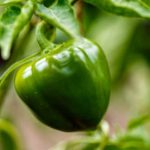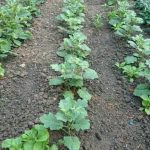Introductory Section:
Efficient watering methods are essential for the success of vegetable gardens. One such method that has gained popularity among gardeners is the use of a standard drip irrigation kit.
This article will explore the benefits and advantages of utilizing a standard drip irrigation kit for vegetable gardens, providing insights into its components, installation process, maintenance tips, and more. Whether you are a novice or experienced gardener, incorporating a drip irrigation system can greatly enhance the health and productivity of your vegetable garden.
Using a standard drip irrigation kit offers numerous advantages over traditional watering methods. By delivering water directly to the roots of plants, this system minimizes water waste by reducing evaporation and runoff. As a result, gardeners can significantly save on their water bills while ensuring that their plants receive optimal hydration.
Additionally, drip irrigation helps to prevent weed growth as the water is targeted specifically to plant roots, limiting moisture availability to unwanted vegetation. This not only saves time but also reduces the need for manual weeding.
A typical standard drip irrigation kit consists of several essential components that work together to provide efficient watering. These include drip lines or tubing through which water flows, emitters or drippers that release water at specified intervals directly onto plants’ roots, and connectors that join various parts of the system together. Understanding how each component functions and its purpose within the system will enable you to select and set up an appropriate kit for your vegetable garden’s specific needs.
In this article, we will delve into greater detail about each aspect of using a standard drip irrigation kit for vegetable gardens: from understanding its components and selecting the right one for your garden size and plant types to providing step-by-step installation guidelines and maintenance tips. By grasping all aspects of this efficient watering method, you’ll be able to maximize your vegetable garden’s productivity while conserving resources in an environmentally-friendly manner.
So let’s get started on exploring the benefits and advantages offered by a standard drip irrigation kit for vegetable gardens.
Understanding the Components of a Standard Drip Irrigation Kit for Vegetable Gardens
A standard drip irrigation kit for vegetable gardens is composed of several key components that work together to efficiently deliver water directly to the plant roots. Understanding these components and their functions is crucial for successful installation and operation of the system.
- Drip Lines: The main component of a drip irrigation kit, drip lines are flexible tubes designed to distribute water evenly throughout the garden. These lines are usually made from polyethylene and have tiny emitters or drippers embedded within them at regular intervals. The spacing between emitters determines the amount of water delivered to each plant.
- Emitters: Emitters, also known as drippers or micro-sprayers, regulate the flow rate of water from the drip lines. They come in various types such as adjustable flow emitters, pressure-compensating emitters, and bubbler emitters. Emitters can be placed directly adjacent to plants or inserted into spaghetti tubing to reach individual plants.
- Connectors: Connectors are used to join different sections of drip lines together or connect additional accessories like filters, pressure regulators, and timers. They ensure a secure and leak-free connection between components.
- Filters: Filters prevent debris or particles from clogging up the emitters and blocking the flow of water. They are typically installed at the beginning of the system where water enters to ensure clean and uninterrupted irrigation.
- Pressure Regulators: Pressure regulators help maintain a consistent pressure throughout the system by reducing high-pressure water sources to a level suitable for efficient irrigation without damaging any equipment. They ensure uniform distribution of water regardless of changes in elevation or fluctuations in incoming pressure.
| Component | Function |
|---|---|
| Drip Lines | Distribute water evenly throughout the garden |
| Emitters | Regulate flow rate of water to individual plants |
| Connectors | Join different sections and accessories together |
| Filters | Prevent debris from clogging emitters |
| Pressure Regulators | Maintain a consistent pressure for efficient irrigation |
Overall, understanding the components of a standard drip irrigation kit allows gardeners to make informed decisions during setup and makes troubleshooting easier in case of any issues. Each component plays a vital role in ensuring efficient water distribution and healthy plant growth.
Selecting the Right Standard Drip Irrigation Kit for Your Vegetable Garden
When it comes to selecting the right standard drip irrigation kit for your vegetable garden, there are several factors to consider. The size of your garden, the source of water, and the types of plants you are growing all play a role in determining which kit is best suited for your needs. By taking these factors into consideration, you can ensure that your drip irrigation system is efficient and effective.
Garden Size
One of the first things to consider when selecting a drip irrigation kit is the size of your vegetable garden. Larger gardens may require more extensive systems with additional components such as multiple main lines or extra emitters. Smaller gardens, on the other hand, may only require a basic kit with fewer components. It’s important to accurately measure your garden space and take into account any potential expansion in the future.
Water Source
Another crucial factor to consider is your water source. Drip irrigation kits typically come with different options for connecting to a water source, such as directly attaching to a faucet or using a timer system connected to an outdoor water line. Understanding how easily accessible and consistent your water source is will help determine which type of connection method is best for you.
Plant Types
Different types of plants have varying watering requirements. Some vegetables may need more frequent and targeted watering compared to others. When selecting a drip irrigation kit, it’s vital to choose one that allows you to adjust the flow rate and distribution of water based on the specific needs of your plants. Consider whether you will be planting a variety of vegetables or if you have specific plants that require specialized care.
Step-by-Step Installation Guide for a Standard Drip Irrigation Kit in Your Vegetable Garden
Installing a standard drip irrigation kit in your vegetable garden can greatly benefit the growth and productivity of your plants. Not only does it provide a consistent and efficient watering method, but it also helps conserve water and minimize weed growth. To help you get started, here is a step-by-step installation guide for setting up a standard drip irrigation kit in your vegetable garden.
- Prepare the soil: Before installing the drip irrigation system, it is important to prepare the soil by removing any weeds or debris. Clear the area where the main line will be laid out.
- Lay out the main line: The main line is the backbone of your drip irrigation system. It delivers water from the source to each plant bed. Lay out the main line along the desired route, making sure to position it close to each row or bed of vegetables.
- Connect components: Attach connectors to both ends of the main line to ensure a secure connection. If necessary, use T-connectors or elbow fittings to create branching lines that lead to different sections of your vegetable garden.
- Place emitters: Install emitters along the drip line at regular intervals, aligning them with each plant’s root zone. The recommended spacing between emitters depends on factors such as plant type and soil type. For example, small plants may require emitters every 6-12 inches, while larger plants may need them every 12-24 inches.
- Test and adjust: Once all components are connected and emitters are in place, turn on the water source to test the system for leaks or malfunctions. Adjust the water flow rate using pressure regulators if needed.
- Mulch and cover: To further conserve water and prevent weed growth, cover the soil with organic mulch once your drip irrigation system is installed and functioning properly. This will help retain moisture and suppress weed growth, maximizing the benefits of your system.
Installing a standard drip irrigation kit in your vegetable garden may seem overwhelming at first, but by following these step-by-step instructions and using the provided visuals or diagrams, you can easily set up an efficient and effective watering system for your plants. With proper installation and maintenance, you’ll be able to enjoy the benefits of consistent and targeted watering while conserving water and reducing weed growth in your vegetable garden.
Benefits of Using a Standard Drip Irrigation Kit for Vegetable Gardens
Using a standard drip irrigation kit for vegetable gardens offers numerous benefits that can greatly enhance the success and productivity of your garden. By implementing efficient watering methods, you can ensure that your plants are adequately nourished while conserving water and minimizing weed growth. Let’s take a closer look at the advantages of using a standard drip irrigation kit.
Reduced Water Usage
One of the primary benefits of using a standard drip irrigation kit is its ability to significantly reduce water usage compared to traditional watering methods. Drip irrigation delivers water directly to the roots of plants, minimizing evaporation and runoff. This targeted approach ensures that plants receive the precise amount of water they need, resulting in healthier growth and reduced wastage.
Minimized Weed Growth
Weeds can be a common nuisance in vegetable gardens, competing with crops for valuable nutrients and resources. With a drip irrigation system, water is applied directly to the base of plants through emitters or drippers, keeping the soil surface dry. This reduces weed germination and growth since weeds typically thrive in moist conditions. By using a standard drip irrigation kit, you can minimize weed growth and spend less time battling unwanted plants in your garden.
Targeted Watering
Another advantage of using a standard drip irrigation kit is the ability to target specific areas or individual plants in your vegetable garden. The flexibility provided by adjustable emitters allows you to customize the flow rate for each plant’s needs. For example, plants with higher water requirements can be given more water while those with lower needs can receive less. This precision watering not only ensures that each plant receives adequate hydration but also helps prevent overwatering or underwatering.
Maintenance and Troubleshooting Tips for Your Standard Drip Irrigation Kit
Once you have installed your standard drip irrigation kit in your vegetable garden, it is important to maintain its efficiency to ensure optimal watering and plant growth. Here are some maintenance and troubleshooting tips to help you keep your system running smoothly:
- Clean the filters: Over time, debris and sediment can accumulate in the filters, causing clogs and affecting water flow. Regularly cleaning the filters will prevent these issues. Follow the manufacturer’s instructions for removing and cleaning the filters, usually by rinsing them with clean water or using a brush to remove any debris.
- Check for leaks: Inspect your irrigation system regularly for leaks. Leaks can lead to uneven watering or wasted water, so it’s crucial to address them promptly. Look for wet spots, damaged connectors or tubing, and ensure that all connections are secure. If you find any leaks, replace or repair the affected components.
- Adjust water flow: The water needs of your plants may change throughout the growing season. It is important to monitor and adjust the water flow accordingly. Most standard drip irrigation kits come with adjustable emitters or valves that allow you to control the amount of water each plant receives. Consider factors such as weather conditions, plant maturity, and soil moisture levels when adjusting the water flow.
- Prevent clogging: Drip irrigation systems are prone to clogging due to particulates present in the water supply. To minimize clogging issues, use a filtration system before connecting your kit to the water source or install additional filters along the main line if needed.
- Regularly check emitters: Emitters play a crucial role in delivering water directly to plant roots efficiently. Inspect them regularly for clogs or damage that may affect their functioning. Clear any obstructions using a small wire tool or replace damaged emitters as needed.
By following these maintenance tips, you can ensure that your standard drip irrigation kit remains efficient and effective in watering your vegetable garden. Troubleshooting any issues promptly will help you avoid potential problems and keep your plants healthy and thriving.
Best Practices for Maximizing the Effectiveness of a Standard Drip Irrigation Kit
One of the greatest advantages of using a standard drip irrigation kit for vegetable gardens is its ability to provide targeted watering. To maximize the effectiveness of your kit, it is important to follow some best practices that will ensure optimal performance and help your plants thrive.
Proper spacing of emitters is crucial in ensuring that each plant receives adequate water. The spacing will depend on the type and size of plants in your garden. For smaller plants, such as lettuce or herbs, emitters should be placed closer together to ensure even coverage. Larger plants, like tomatoes or peppers, may require fewer emitters but placed strategically around the root zone.
Timing and frequency of watering are also key factors in maximizing the effectiveness of a standard drip irrigation kit. It is generally recommended to water vegetables early in the morning or late in the afternoon when evaporation rates are lower. This allows the water to penetrate deep into the soil before it can evaporate.
Another important practice is adjusting the water flow based on plant needs and weather conditions. During hot and dry periods, you may need to increase the water flow rate or extend watering time to prevent wilting or drought stress. Conversely, during cooler periods with higher humidity, you can reduce watering frequency to avoid overwatering and promote healthy root development.
In addition to these practices, there are several accessories and complementary products that can enhance the effectiveness of your standard drip irrigation kit. Adding a timer to your system will automate watering schedules, ensuring consistency and efficiency. Installing a pressure regulator and backflow preventer will help maintain steady water pressure and protect against contamination.
By following these best practices and utilizing appropriate accessories, you can maximize both water efficiency and plant health in your vegetable garden. Implementing these techniques will not only save you time and effort but also result in bountiful harvests while conserving precious resources.
| Best Practices | Description |
|---|---|
| Proper Spacing of Emitters | Ensure even coverage by placing emitters at the appropriate distance based on plant size. |
| Timing and Frequency of Watering | Water plants early in the morning or late in the afternoon to reduce evaporation rates. Adjust watering frequency based on weather conditions. |
| Adjusting Water Flow | Modify water flow rate and duration to meet plant needs and environmental factors. |
| Accessories and Complementary Products | Add a timer, pressure regulator, and backflow preventer for automated scheduling, consistent pressure, and contamination prevention. |
Frequently Asked Questions about Standard Drip Irrigation Kits for Vegetable Gardens
Standard Drip Irrigation Kits for Vegetable Gardens have gained significant popularity among gardeners due to their efficient and targeted watering capabilities. As such, many gardeners may have questions or concerns regarding the use and installation of these kits. In this section, we will address some frequently asked questions about standard drip irrigation kits for vegetable gardens and provide detailed answers to assist gardeners in making informed decisions.
- Can a standard drip irrigation kit be used for any size vegetable garden?
- How do I determine the appropriate water source for my drip irrigation system?
- Will a standard drip irrigation kit work with different types of plants in my vegetable garden?
- What is the estimated lifespan of a standard drip irrigation kit?
- Can a standard drip irrigation kit be installed above ground?
Yes, standard drip irrigation kits can be used for vegetable gardens of all sizes. These kits typically come with various lengths of drip lines that can be easily customized to fit your garden’s dimensions. Additionally, you can connect multiple lines or utilize T-connectors to ensure adequate coverage for larger gardens.
The ideal water source will depend on the specific needs of your vegetable garden. If you have access to an outdoor faucet or hose bib, you can easily connect your drip irrigation kit directly to it using a pressure regulator. Alternatively, if you prefer a more sustainable option, rain barrels and other water storage containers can be utilized as the water source for your system.
Absolutely. Standard drip irrigation kits are versatile and suitable for a wide range of vegetables, including tomatoes, cucumbers, peppers, lettuce, and more. The adjustable emitters allow you to control the flow rate of water delivered to each plant based on its individual moisture requirements.
With proper maintenance and care, a well-designed and high-quality standard drip irrigation kit can last up to 10 years or even longer. Regularly inspecting the system for leaks or clogs, cleaning filters as needed, and replacing any damaged components will help prolong its lifespan.
Yes, standard drip irrigation kits can be installed both above ground and below ground. However, burying the drip lines underground can help protect them from damage caused by foot traffic or garden tools. Above ground installation works well in raised beds or for temporary installations.
By addressing these key questions, we hope to provide clarity and helpful guidance to those considering the use of a standard drip irrigation kit for their vegetable gardens. Investing in this efficient watering method can significantly improve plant health, reduce water waste, and maximize overall yield.
Conclusion
In conclusion, a standard drip irrigation kit is a must-have for every vegetable garden. Throughout this article, we have highlighted the numerous benefits and advantages of using a drip irrigation system in your garden. From efficient watering methods to reduced water usage and minimized weed growth, a drip irrigation kit can significantly improve the productivity and sustainability of your vegetable garden.
Not only does a standard drip irrigation kit provide targeted watering, ensuring that each plant receives the right amount of water directly at its root zone, but it also saves valuable time and effort for gardeners. With easy installation and low maintenance requirements, this system allows you to focus on other aspects of gardening while still enjoying healthy and thriving plants.
Moreover, real-life success stories and testimonials from experienced gardeners further emphasize the effectiveness of a standard drip irrigation kit. Many have witnessed higher crop yields, improved plant health, and reduced water bills after implementing this system in their vegetable gardens.
By investing in a standard drip irrigation kit that suits your specific needs, you are taking a proactive step towards maximizing the potential of your vegetable garden. Not only will the system enhance the overall health and growth of your plants, but it will also contribute to conserving water resources. So why wait? Get started with a standard drip irrigation kit today and reap the countless rewards it offers for your vegetable garden.
Frequently Asked Questions
What size drip emitters to use for vegetable garden?
When choosing the size of drip emitters for a vegetable garden, it is important to consider the water needs of the plants and soil conditions. In general, 1/2 gallon per hour (GPH) or 1 gallon per hour (GPH) drip emitters are commonly used for vegetable gardens. The decision between the two sizes depends on factors such as plant spacing, soil type, and climate.
If you have plants that are spaced closer together or have sandy soil that drains quickly, using 1/2 GPH emitters might be more appropriate to ensure adequate water distribution. On the other hand, if your vegetables are spaced further apart or have clayey soil that retains moisture well, using 1 GPH emitters may be sufficient.
How much water do I need for a drip irrigation for a vegetable garden?
Determining the amount of water needed for a drip irrigation system in a vegetable garden involves considering factors such as plant water requirements, climate conditions, and soil characteristics. Generally, it is recommended to provide about 1 inch of water per week through irrigation for vegetable plants. However, this can vary depending on factors like temperature and evaporation rates.
To determine how much water your specific garden needs, you can use methods such as measuring actual evapotranspiration rates or employing a rain gauge to monitor rainfall levels throughout the season. By adjusting your watering schedule accordingly based on these factors, you can ensure that your vegetables receive adequate hydration without overwatering.
What is the best irrigation system for a vegetable garden?
The best irrigation system for a vegetable garden ultimately depends on various factors including garden size, layout, budget constraints, and personal preferences. There are several options available which include drip irrigation systems, soaker hoses, sprinkler systems and manual watering methods such as hand-watering with a hose or watering can. However, many professionals and experienced gardeners often recommend using drip irrigation systems for vegetable gardens due to their efficiency and ability to deliver water directly to the plant roots while minimizing water loss through evaporation or runoff.
Drip systems can be customized to individual plant needs, provide consistent moisture levels, and reduce the risk of certain diseases that can result from overhead watering. Additionally, they are generally easy to install and maintain, making them a popular choice for most vegetable gardeners. It is important to weigh these considerations and factors specific to your garden before deciding on the best irrigation system for your vegetable patch.

If you’re looking to get into vegetable gardening, or are just looking for some tips on how to make your current garden better, then you’ve come to the right place! My name is Ethel and I have been gardening for years. In this blog, I’m going to share with you some of my best tips on how to create a successful vegetable garden.





